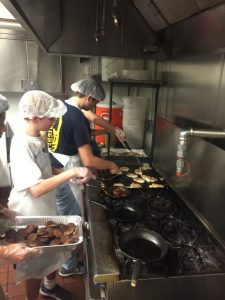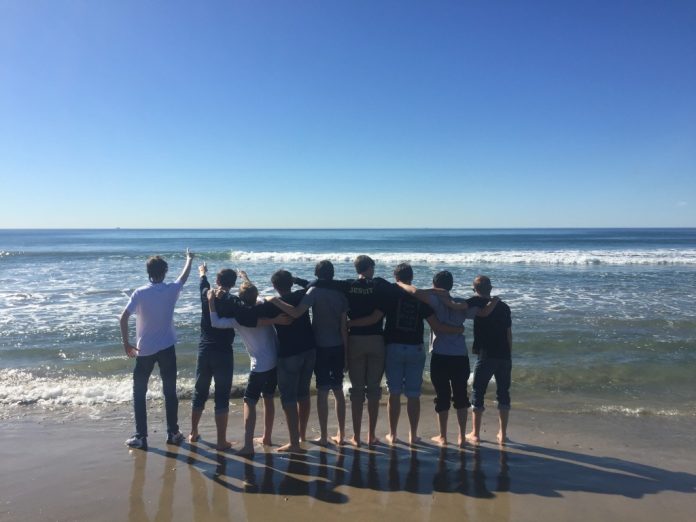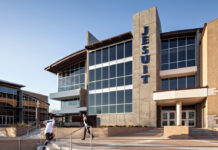
 Their faces lit up with joy when they saw us walking into the schoolyard. Their cheers and gleeful laughter could be heard even in the upstairs room where we were eating breakfast. Their happiness was contagious, inspiring us to want to assist at the school as much as we could.
Their faces lit up with joy when they saw us walking into the schoolyard. Their cheers and gleeful laughter could be heard even in the upstairs room where we were eating breakfast. Their happiness was contagious, inspiring us to want to assist at the school as much as we could.
On November 18, 2015, nine Jesuit students, both sophomores and juniors, and two teachers, lead by Ms. Regina Progar, embarked on a journey to the Dolores Mission in Boyle Heights, a portion of Los Angeles. Named after Jesuit priest Fr. Greg Boyle, Boyle Heights is a small remnant of what it used to be. A previous hotspot for gang activity, Boyle Heights is now home to many schoolchildren who are seeking a higher education at the Dolores Mission School.
Established and originally run by nuns, the Dolores Mission School is now lead by Jesuit priests, who gradually transformed the school into what it is today. Their mission is to educate the children academically, physically, spiritually, and morally, and to form the children into “men and women for others.”
Michael Keelan, ’18 remembered how “All of the children’s faces instantly lit up when they saw me.” The children immediately looked up to all of the travelers from Jesuit. They were always fighting for the attention of the older visitor, and they really loved having the visitors from Texas.
After assisting in the school and becoming settled, the group had a tour of Homeboy Industries, f ounded by Father Greg Boyle. Father Greg played a large role in helping to decrease the gang violence in Boyle Heights. With its motto, “Jobs not Jails,” Homeboy Industries brings in former gang members, many of whom had been to prison, helping the former members find jobs and avoid their old choices.
ounded by Father Greg Boyle. Father Greg played a large role in helping to decrease the gang violence in Boyle Heights. With its motto, “Jobs not Jails,” Homeboy Industries brings in former gang members, many of whom had been to prison, helping the former members find jobs and avoid their old choices.
On Saturday, the group woke up at 3:00 in the morning to cook breakfast for the homeless who had spent the night in the Dolores Mission Church. Afterwards, the group was lead on a tour of Skid Row, a primarily homeless portion of Los Angeles. After walking through the streets where many homeless men and women eat, sleep, and live, and after hearing the personal experiences of the tour guide, the members of the group underwent a change in the way that they saw the homeless.
Sam Olden, ’17 commented: “My perspective on the lives of the homeless has completely changed after simply talking to them.” Just the interactions with those who had experienced homelessness for so long, those who had different experiences, changed the paradigms of all those present.
After returning from the trip late Sunday night, Ms. Regina Progar reflected that the trip “really helps the students see that no matter where we are from, or our beginnings, we are all one.” The trip really did positively affect all those who participated. From interactions with the gleeful schoolchildren to talking with the homeless and former gang members, the whole trip left its mark on the Dallas Jesuit students who participated. It will surely lead them to be, in the words of Father Greg Boyle, “men for and with others.”
Photography thanks to Ms. Progar and Mr. Armstrong






